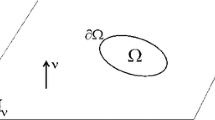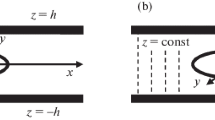Abstract
The model of a propagating crack introduced by Craggs for an isotropic solid is extended to the case of general elastic anisotropy. The general theory for propagation under tensile or shear stresses is derived. As for most two dimensional problems in anisotropic elasticity, the solution involves the roots of a sixth degree polynomial so that it is necessary to proceed numerically at some stages. A computer program has been written to do this. This is used to show that the shape of the square cracks which are produced in the interior of silicon-iron by the internal pressure of electrolytic hydrogen may be due to elastic anisotropy. On this basis, predictions can be made as to the shape of cracks in other metals, in particular molybdenum, vanadium and tantalum. These metals are representative of the four combinations of fracture plane and deviation from isotropy. Explicit formulae are given for the special orientations where the sixth degree polynomial can be explicitly factorized.
Similar content being viewed by others
Author information
Authors and Affiliations
Rights and permissions
About this article
Cite this article
Atkinson, C., Head, A.K. The influence of elastic anisotropy on the propagation of fracture. Int J Fract 2, 489–505 (1966). https://doi.org/10.1007/BF00193688
Issue Date:
DOI: https://doi.org/10.1007/BF00193688




